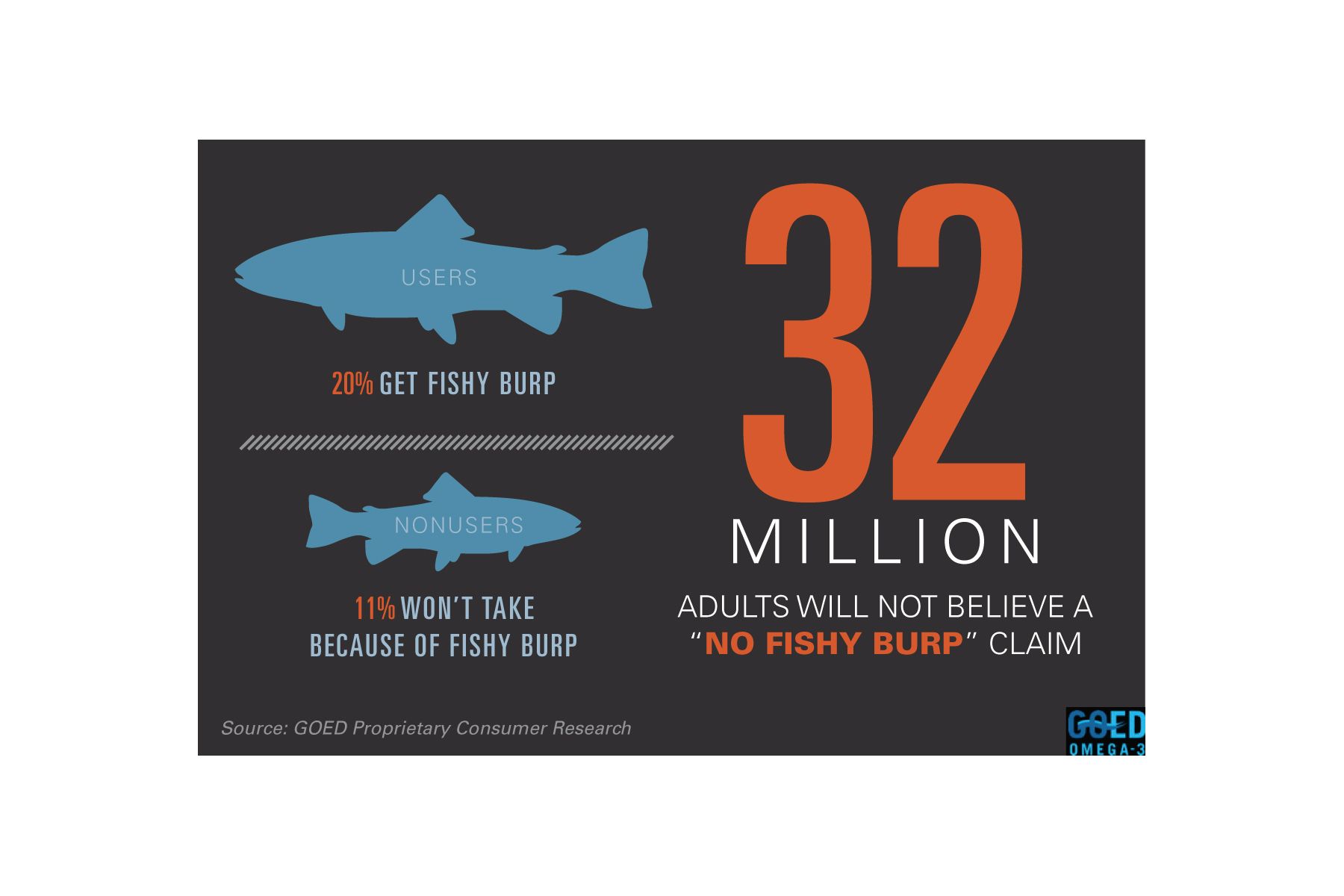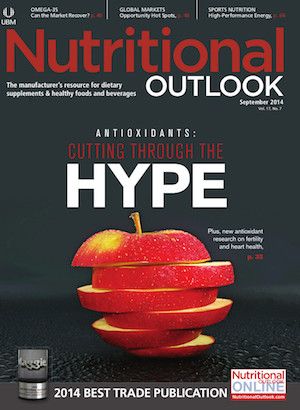How Omega-3 Companies Will Build the Bridge to Consumer Trust
So, the omega-3 market is slumping? Here's how we'll get it back on track.

The omega-3 industry has benefitted from years of market growth and decades of scientific research, making omega-3s one of the most researched categories in the supplements industry and a nutrient more likely to be recognized by consumers and recommended by healthcare practitioners. Yet, the bloom is off the rose. A thriving market not too long ago is now experiencing decline. Nielsen data reported a cumulative $149 million drop in U.S. mass-market sales of omega-3s from mid-2013 to April 2014. (Read Nutritional Outlook's analysis on the current omega-3 market slump.)
No segment of the omega-3 industry has been immune. The initial decline first happened in the 18:12 oil business (18% EPA: 12% DHA), which is generally considered the most common, “entry level” omega-3 category. But sales in premium categories like higher omega-3 concentrates and krill oil also fell in late 2013. In fact, the omega-3 industry saw an overall decline of approximately 10% in monthly year-over-year sales through the first five months of 2014. The Global Organization for EPA and DHA Omega-3s (GOED; Salt Lake City, UT) estimates that 12 million consumers have left the category. Interestingly, this includes younger women as well as older men in terms of demographics. All together, these negative changes impact business dynamics industry-wide.
To help reverse this decline, GOED and its membership formed an industry coalition earlier this year. While addressing the market downturn is crucial, of equal concern is retaining the consumers we do have as well as the new users that the industry coalition will bring to the category. And it all starts with building consumer trust.
While omega-3s are lucky enough to be a scientifically grounded category with a good track record, there are self-imposed roadblocks that we, as an industry, need to acknowledge and avoid. GOED believes there are several key areas in which branded manufacturers must be more transparent in order to establish credible conversations with their customers and ensure consumer confidence in the long run.
GOED recently completed an analysis of the top 50 branded omega-3 manufacturers-who comprise 84% of the category-and analyzed these brands’ product claims and packaging to determine areas needing improvement. Here is what we found.
What Not to Do:
It’s All About the Claims
Every branded manufacturer includes structure/function claims on the product label, yet only 7 out of 50 include substantiation of those claims on their labels or websites. A wealth of background information is available to support the claims being made, so scientific documentation should be easy to obtain and communicate to consumers; unfortunately, it’s just not something deemed overly vital in the industry, to date. As consumer interest increases, however, and shoppers seek to educate themselves, claims substantiation is vital.
No Fishy Burp? Ha!
While we’re on the subject of claims, it’s also important to make sure that the claims you make are believable. GOED research shows that 32 million consumers do not believe marketers’ “no fishy burp” claims. (View infographic above.) Bottom line: individuals’ digestive systems process each unique omega-3 supplement differently, so marketers should take care not to set expectations across the board for “no fishy burps” that all consumers may not experience. As an industry, we must ensure that the “no fishy burp” claim does not become a claim as ubiquitous and meaningless as the “all natural” claim. Seen everywhere and proven incorrect by many makes a claim not trustworthy by all.
Mercury and Dioxins and PCBs, Oh My!
Another concerning area involves contaminants, for which omega-3 supplements are routinely tested. The good news is that GOED has undertaken a randomized testing program over the last two years, and omega-3 products test consistently “clean” on these contaminants. Independent organizations like ConsumerLab.com have published similar findings. But here’s the catch: being “clean” means that these omega-3 products contain contaminant levels that are below regulatory limits and GOED monograph limits, but it does not mean these products are completely “free of contaminants”-which is what 38 of the top 50 branded players are claiming.
This may seem like a small point, but the trustworthiness of a “contaminant free” claim is important in the eyes of a young mom about to give an omega-3 supplement to her child. Category risk is a serious issue here, too, because multiple consumer watchdog groups now test our category. A simple test will disprove the “free from contaminants” claim and drum up bad press for a brand and the industry as a whole.
What to Do:
EPA and DHA: A Numbers Game
Now, let’s talk about what you should say on the label. For some time, manufacturers have focused on educating consumers about the importance of EPA and DHA as key fatty acids, and the plan is working. Consumers are “trading up” to higher EPA and DHA levels per dose to ensure higher levels of omega-3s in each serving. Yet, 23 of 50 branded manufacturers are not taking advantage of the educated consumer, by failing to spell out the amount of EPA and DHA in each soft gel. Listing only “total omega-3s” is not helping to start a dialogue with the consumer and building a connection to your brand. This is another easy fix that omega-3 companies should consider implementing as soon as possible.
Where Does My Product Come From?
A more challenging task is complying with country-of-origin labeling. While the practice of country-of-origin labeling has surfaced more prevalently in the food industry, the trend is piquing the interest of supplement consumers, as well, and they want to know more about where their supplements come from. For omega-3 supplements, the path to the store shelf can be anything but simple. Supplements may originate from fish caught in the ocean off Peru and go through a refining facility in Norway and then a soft gel manufacturer in the United States. However-again, going back again to the transparency theme-just because the story is complicated does not mean the consumer is not interested in hearing it.
Telling the Supply Chain Story
Country-of-origin labeling is only one aspect of tracking a product’s supply chain; equally important is telling the supply chain story about your product’s source. Part of the story here is sustainability, which-while it scores low in importance in GOED consumer surveys-is still a consumer focus, particularly as the media tells the story of “overfishing” and highlights farmed-fish issues. The good news is that the majority of fisheries that supply omega-3 products are sustainably managed, so it’s just a matter of communicating this message to consumers.
The last aspect of the supply chain story involves knowing who your partners are. While consumers may never know the soft gel contract manufacturer you use-or whether that company protected your oil from oxidation as it went through the manufacturing process-what consumers will know is that their supplement smells bad because it oxidized before they finished the bottle. In today’s competitive world, every advantage is important, and making sure you are working with quality suppliers and manufacturing partners will help improve consumer trust and your bottom line.
Sidebar: A Strategic Return
In February 2014, the omega-3 industry came together to form an industry coalition to reverse the decline in the omega-3 market. The coalition analyzed the market downturn-at least partially attributed to recent negative media attention-compared to other industries that have faced similar downturns, including the U.S. dairy industry, the pork industry, and the RV (recreational vehicle) market. Each industry formed a campaign-“Got Milk?,” “Pork: the Other White Meat,” and “Go RVing”-that embraced three key components: a consumer advertising campaign, public relations outreach, and an in-store activation component along with detailed market research and analysis to test messages and metrics.
The Omega-3 Coalition, now touting the tagline “Omega-3s: Always a Good Idea,” is now in the process of a Charlotte, NC, market test that incorporates all of these components in preparation for a national launch in early 2015. The coalition has raised $3.5 million to date for the national campaign, but continues to seek funding.












